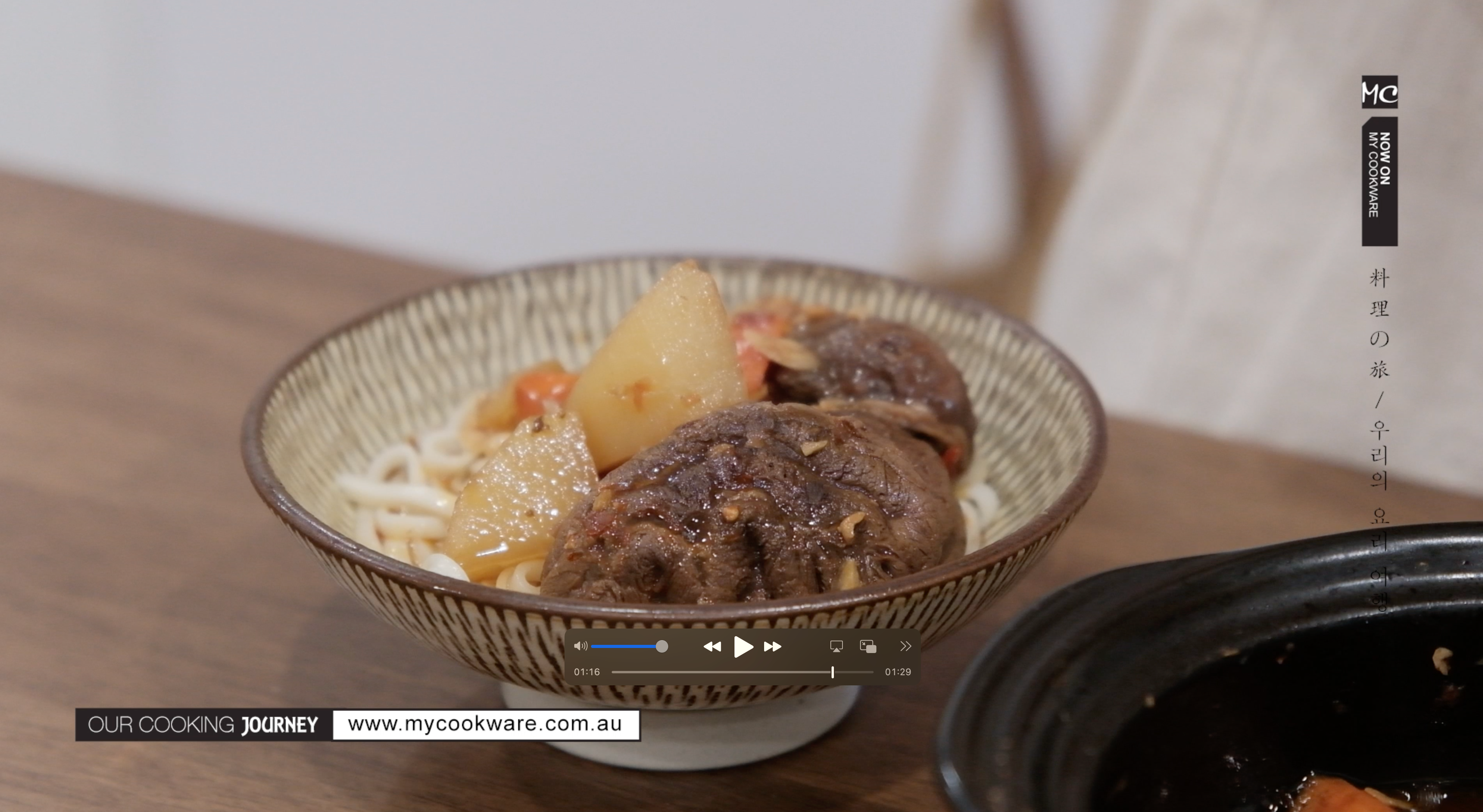
Recipe: Braised Beef Noodles - A Taste of Taiwan Cooked in a Donabe
Braised Beef Noodles: A Taste of Taiwan Cooked in a Donabe
Taiwan's Braised Beef Noodles, known locally as 紅燒牛肉麵, are a blend of flavours and textures that offer a comforting warmth with each bite.
The secret to its rich flavour profile is in the sauce - a blend of soy sauces, broad bean paste (Doubanjiang), rice wine, ginger, and a hint of rock sugar. This blend is simmered to perfection with top-quality beef cuts and aromatic vegetables.
The result? A broth teeming with intense flavours, striking the perfect balance of sweetness, spice, and umami, enhanced by the succulence of the braised beef.
The Charm of Cooking in a Donabe
In this recipe, we cook our Braised Beef Noodles in a traditional Japanese earthenware pot called a donabe. Donabe is known for its heat retention properties. The clay pot cooks your food evenly and maintains its temperature long after being removed from heat, making it perfect for slow-cooked dishes like our beef noodles.
The particular donabe we are using has a clever design—the lid can also serve as a serving bowl.
Click here to see our donabe collection.
Ingredients:
- 500 grams of beef
- 1/4 radish
- 1/4 red carrot
- 2-3 spring onions
- 1/4 onion
- A few slices of ginger
- 1-2 chilli
- A pinch of minced garlic
For the seasoning:
- 1 tablespoon of broad bean paste (Doubanjiang)
- 1-2 tablespoons of light soy sauce
- 1 teaspoon of dark soy sauce
- A touch of rock sugar (you may substitute granulated sugar)
- A dash of salt
- A bit of rice wine
- Water as needed
Know the Essential Ingredients
Broad Bean Paste (Doubanjiang) is a fermented paste made from broad beans and chili peppers. It adds a rich, savory, and slightly spicy flavour to your noodles.
Rock Sugar, also known as rock candy, adds a subtle sweetness and helps to harmonise the flavours in your dish.
Instructions:
- Start with a cold pot and add oil. Then, add the beef, cut into thick pieces of about 1.5cm for stewing. Use medium heat.
- Do not stir immediately. Allow the beef to emit a fragrant aroma before frying the other side. This method enhances the flavour of the stew at the end.

- Add garlic, ginger, onion, and chili to the pot, stirring until fragrant. Incorporate the rice wine and ensure it is evenly spread.
- Add a large spoonful of broad bean paste (Doubanjiang), stir, then add carrots and radish. Pour in enough water to cover the ingredients. Then, add the light soy sauce and dark soy sauce to enhance the flavour.

- Once the pot is boiling, add the spring onions and rock sugar (or granulated sugar), then simmer on low heat for 30-90 minutes. For a chewy texture, simmer for 30 minutes. For a softer, more tender texture, simmer for more than 60 minutes.
- During the cooking process, if you see water seeping from the pot lid, it is recommended to leave a small gap to prevent spillage.
- Lastly, prepare the noodles. Arrange your dish, and it is ready to be served.

With this recipe, you can recreate the authentic taste of Taiwan Braised Beef Noodles in your own kitchen. As you lift the lid off your donabe, you'll be greeted by the aroma of tender beef simmering in a broth packed with flavours.
Choosing the Right Beef Cut
The secret to a fantastic Taiwanese beef noodle soup lies in selecting cuts with abundant connective tissue, which breaks down during slow cooking to infuse the soup with a rich, meaty flavour and tenderise the beef.
Beef Shank: Lean and rich in connective tissue, it adds a hearty flavour to the soup when simmered for hours.
Beef Chuck: Balanced in meat, fat, and connective tissue, it ensures tender and flavourful results.
Beef Brisket: Famous for its thick fat layer and dense connective tissue, it enriches the broth and provides a delightful melt-in-your-mouth texture.
Butchers can help you choose the right cuts suitable for slow cooking.
Additional information:
- Remember a reasonably heated cookware and heated oil (not overheating) are key.
- Users will need basic cooking techniques and common sense (understanding of proper heat control, knowing how to check the food periodically, and so on).
- Heat level, Please note that the heat levels shown below are for general reference only. Every cooktop is different. The following ranges apply if 10 is the maximum.
- Low heat: the heat level is 1-2.
- Medium low heat: the heat level is 3-4.
- Medium heat: the heat level is 5.
- Medium high heat: the heat level is 7-8.
- High heat: the heat level is 9-10.
Click here to see all Donabe Japanese Clay Pots.
COPYRIGHT WARNING: Content theft of any kind is immediately reported to Google, which results in ranking penalties. Original texts can be verified in internet archives. My Cookware Australia® holds the copyrights for all the content on this site, including articles, product descriptions, and user guides.


